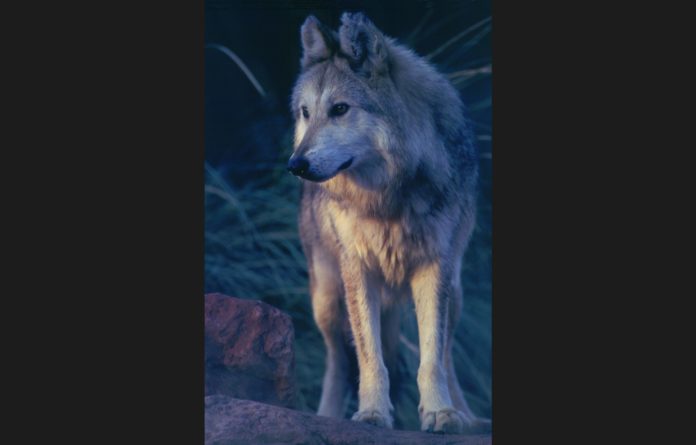
Anubis, a wide-ranging Mexican gray wolf, has returned to the Flagstaff-Sedona area after wildlife officials captured him outside Flagstaff in August and then released him in far eastern Arizona.
In May, the yearling male wolf traveled over 400 miles from his birth pack in New Mexico before spending the summer on the Coconino Plateau above Sedona — a long way outside the current Mexican Wolf Experimental Population Area, which is centered around the Arizona-New Mexico border.
Young wolves naturally disperse long distances in search of mates, but this was a farther-than-average dispersal, and Anubis managed to survive in the area longer than other dispersing Mexican wolves in past years.
In August, federal and state wildlife officials decided to capture and relocate Anubis closer to his peers, citing in part his habit of wandering close to low-density residential areas. Officials had hoped that the 1-and-a-half-year-old wolf would settle down with a mate in the core of the MWEPA, but soon after Anubis was released, he began heading west toward Flagstaff again.
The radio-collared wolf has been back in the area above Sedona for several weeks now. He’s been recorded in the region around Mormon Lake, and more recently has moved north of Interstate 40.
Jim deVos, assistant director and Mexican wolf manager for Arizona Game & Fish, said in his decades working with wolves, it’s been very unusual for a wolf to return to an area after it’s been relocated.
deVos said the agency and its federal partners are closely monitoring Anubis to see where he is going and whether he is getting into any conflicts. It is taking a wait-and-see approach before deciding its next move. He wants to remind the public that Mexican wolves are a protected species wherever they are found — whether inside or outside the MWEPA. Mexican gray wolves have a similar coloration as coyotes, but they are larger and have boxier snouts. Anubis is wearing a radio collar; though not all Mexican wolves are collared.
The wolf’s behavior will determine wildlife managers’ plans, de Vos said. If Anubis stays away from homes and doesn’t have negative interactions with the community, he’s likely to be left alone for now.
Arizona Game & Fish takes the view that it’s best for Mexican wolf recovery to keep wolves within the MWEPA. For deVos, wolves ranging the American West is a romantic idea, but he thinks Flagstaff is not a good place for their recovery. But deVos doesn’t want to relocate Anubis again only to have him return, and he considers placing the wolf in captivity a last resort. It’s better for Mexican wolf recovery to have Anubis in the wild as opposed to captivity, he said.





















